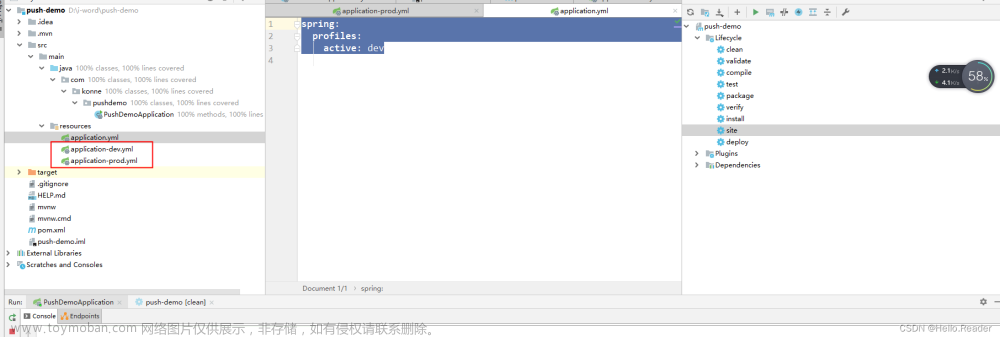package com.example.demo.config;
import com.example.demo.domain.Student;
import org.springframework.beans.factory.annotation.Autowired;
import org.springframework.context.annotation.*;
import org.springframework.core.env.Environment;
@Configuration
@PropertySource("classpath:my.properties")
@Import(MyConfig2.class)
public class MyConfig {
@Autowired
private Environment environment;
@Profile("dev")
@Bean("student")
public Student getStudent(){
Student student = new Student();
student.setAge(Integer.parseInt( environment.getProperty("age")));
student.setName(environment.getProperty("name"));
return student;
}
}
其中,student这个bean只有指定了profile才会装配,比如在application.properties中:
spring.profiles.active=dev
@Profile注解不仅可以用在@Bean上,还可以用在注解类上,用在注解类时文章来源:https://www.toymoban.com/news/detail-617641.html
package com.example.demo.config;
import com.example.demo.domain.Teacher;
import org.springframework.context.annotation.Bean;
import org.springframework.context.annotation.Configuration;
import org.springframework.context.annotation.Profile;
@Configuration
@Profile("dev2")
public class MyConfig2 {
@Bean
public Teacher getTeacher(){
Teacher teacher = new Teacher();
teacher.setName("david");
teacher.setAge(32);
return teacher;
}
}
只有设定了profile为指定的值,该配置类中的所有bean才会装配文章来源地址https://www.toymoban.com/news/detail-617641.html
到了这里,关于SpringBoot复习:(7)@Profile注解的文章就介绍完了。如果您还想了解更多内容,请在右上角搜索TOY模板网以前的文章或继续浏览下面的相关文章,希望大家以后多多支持TOY模板网!









